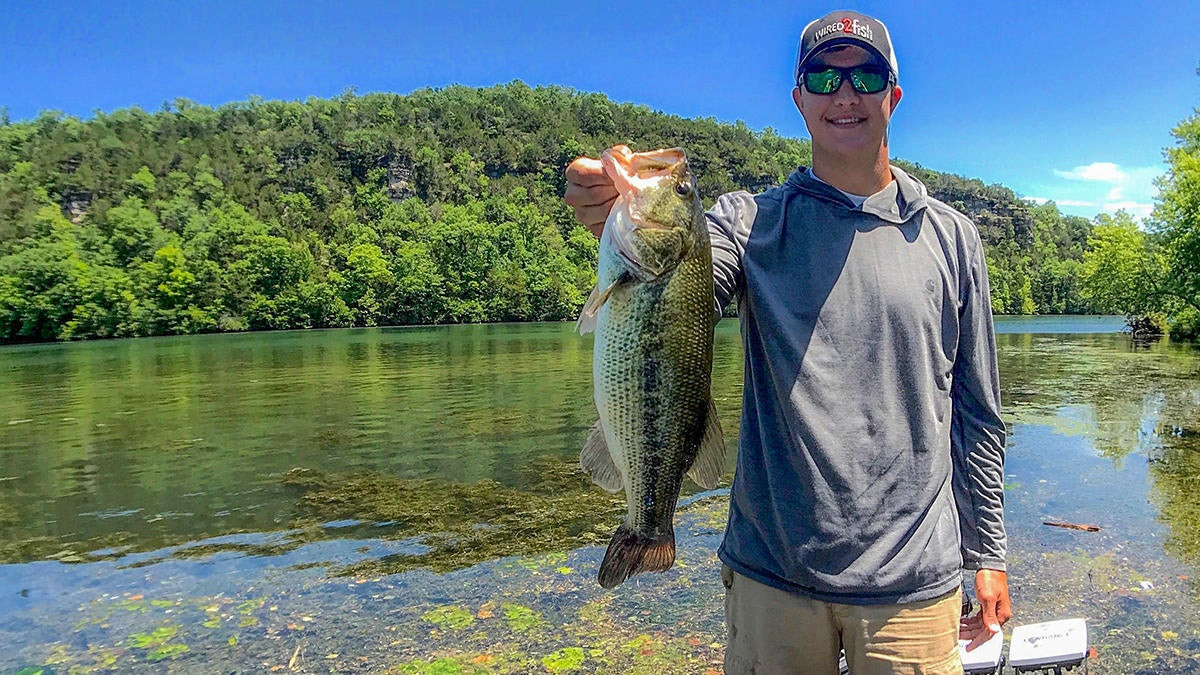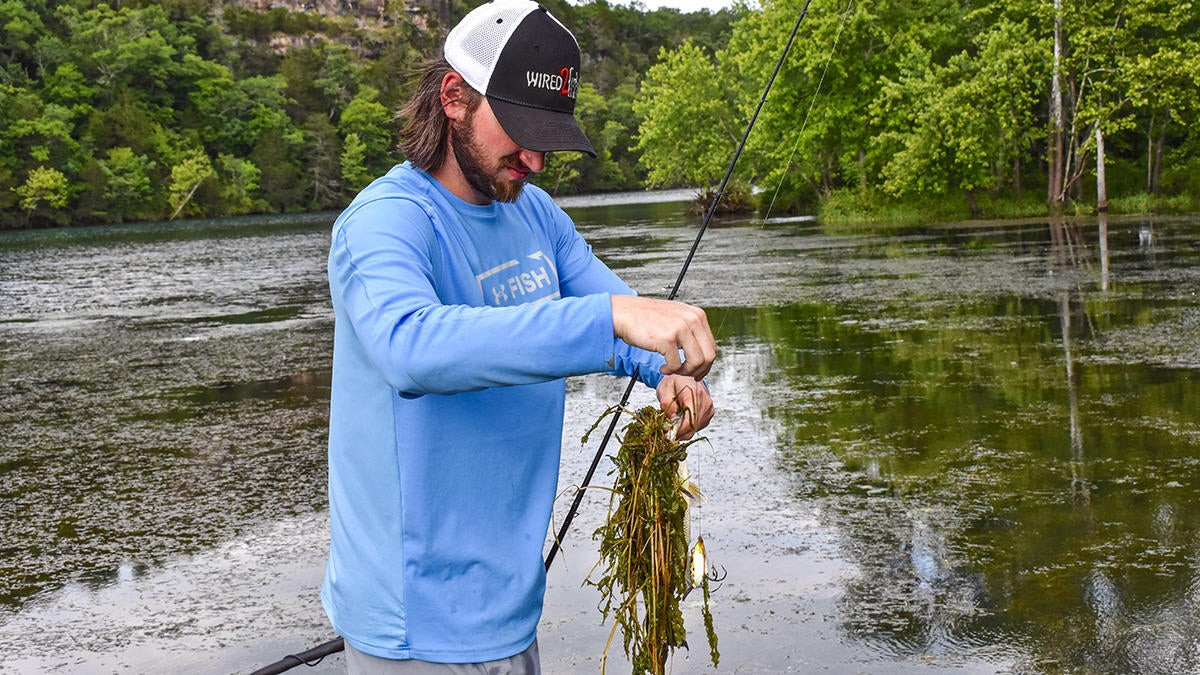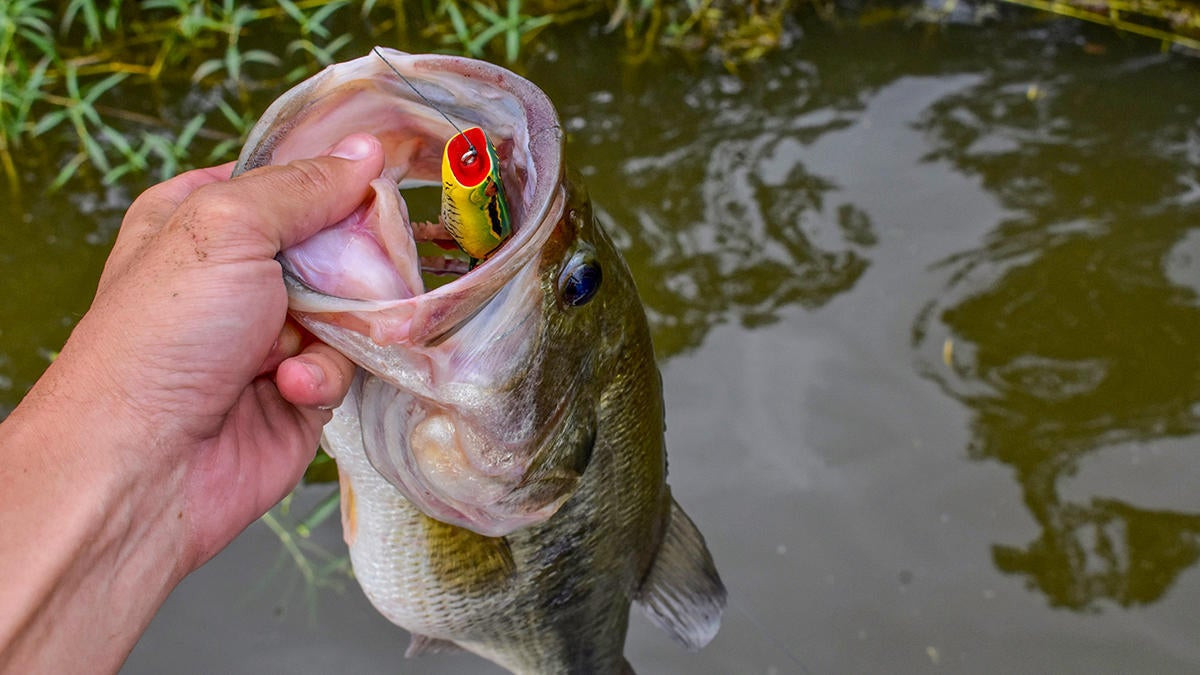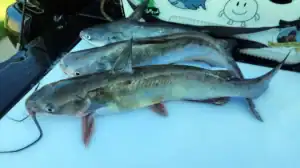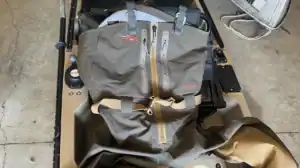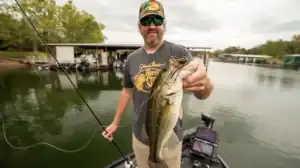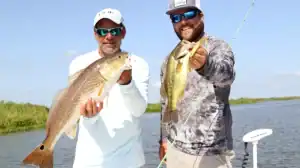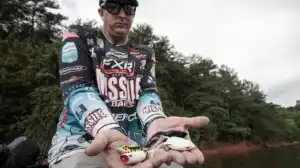Topwater frog fishing for bass is in full bloom right now. There are few lures as exciting to fish and perhaps none more effective around heavy cover than a frog. Frog-imitating baits fool bass from Texas to Canada every year and are an excellent choice during the summer months. Small details are a big deal with frog fishing, however, such as gear selection, optimal colors and cover types.
One detail that’s often overlooked is retrieve cadence. Sometimes bass want a frog fished slowly across the surface, while other trips you’ll get more bites by working the lure quickly and aggressively. Modern-day frogs give anglers the ability to walk-the-dog, spit and chug or buzz and boil the water depending on body style. On any given day one may out perform the other. The best way to find the most productive option is by varying your retrieve cadence and experimenting with them all.
Your retrieve always matters
When it comes to frog fishing, many anglers-myself included-are guilty of casting their favorite Kermit imitator and somewhat mindlessly retrieving it back to the boat. Whether we are excitedly anticipating a blow-up or it’s simply our go-to retrieve, monotony happens. Making the effort to understand the nuances of how different retrieve cadences and speeds affect the number of bites you get will make you a better frogger.
If you watch truly great frog fishermen like Dean Rojas, Ish Monroe or Terry Scroggins you’ll notice they are laser focused on their lure; and you’ll see them change their retrieve regularly. Altering the speed and action of their frogs to see what best appeals to the bass. Grass-fishing connoisseur Terry “Big Show” Scroggins explained why variation is important.
“Fishing a frog is just like any other lure,” Scroggins said. “Whether you’re using a crankbait, a spinnerbait, or a frog it’s best to switch your retrieve every so often. What the bass want changes throughout the course of a day and by switching your retrieve cadence you keep the fish honest. If you’re steadily catching fish, keep doing what you are doing. But if you hit a dry spell, don’t hesitate to switch it up.”
As a rule of thumb, Scroggins fishes a topwater frog slowly in calm, sunny conditions or when targeting thickly matted vegetation. The more clouds and wind he is faced with, the faster and more aggressive Scroggins works his frog. This is a good standard to use as a starting point but it’s certainly not a rule.
A real-world lesson
Last week a buddy and I were fishing a new lake where we found an area with grass and caught a few fish on frogs. We had been working our frogs slow and steady, with what I would define as a standard retrieve. I had made a long cast and saw a fish boil in another area, so I quickly started reeling in to cast in that direction. As my frog briskly scooted across the water a 5-pound bass (fish pictured above) annihilated it.
Not only did the bass hit the frog hard, it had the bait absolutely choked. This made a light bulb go off. We spent the next two hours twitching our frogs fast and aggressively. By changing our retrieve speed we got twice the number of bites and caught noticeably larger fish than what we started with, even in calm and sunny conditions. Bass don’t know the rules of thumb, so never be afraid to show them something different!
All frogs are not created equal
Varying your retrieve cadence isn’t the only way to give bass a different look when frog fishing. You can also change the style of frog you are wielding. Nowadays different brands have a plethora of options when it comes to body style, design, size, and color of these lures.
There are a myriad of traditional frog styles available like the SPRO Bronzeye Frog 65, walking options like the Terminator Walking Frog, popping frogs such as the Strike King KVD Popping Perch or SPRO’s Bronzeye Poppin’ Frog 60, and buzzing toads like the
Booyah Toad Runner or Zoom Horny Toad just to name a few.
These frog styles are designed to produce different actions. If you want to become a topwater frog aficionado, learn how these assorted body styles perform in the water under different circumstances and conditions. Constantly be experimenting. The number of bites and bass you catch will teach you all you need to know. Scroggins follows this same logic.
“Each frog type is a tool for different scenarios,” Scroggins explained. “A standard frog design is typically best when fishing thick slop or mats, a poppin’ frog is my go-to around sparse vegetation, docks, or brim beds, and I use a buzzing frog when I am wanting to cover water and search for bass. However, weather conditions modifies this day by day, so I’m always testing other styles out.”
If you are missing a lot of blow-ups or the bass you catch are barely hooked, that’s a good indication you should try another body style. A fish may slap at and miss a buzzing toad, but inhale a less intrusive offering like a walking frog. The only way to know is to regularly give each frog design a try and learn from the results.
Whether you want to become a more accomplished frogger or you’ve been struggling to catch fish with this technique, try following these tips and experimenting with your frogs this summer. Varying your retrieve cadence along with employing different body designs will lead to catching more bass on these amphibian imitating topwaters.
